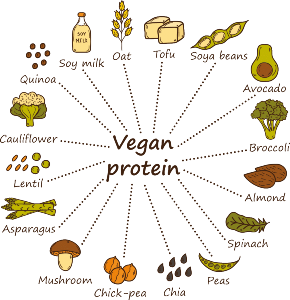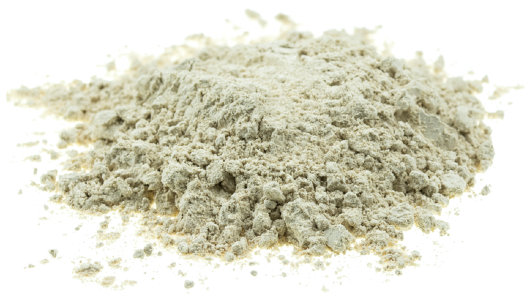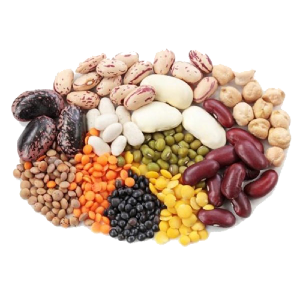.webp)
- 21st September 2020
Table of Contents
- Which protein is best – Animal or Plant?
- What is the meaning of “Grams of Protein”?
- Nutritional value of protein powder per serving
- Type of Proteins
- Collagen Protein
- Egg white Protein
- Whey Protein
- Casein Protein
- Plant Protein
- Calories
- 111
- 112
- 119
- 107
- 120
- Carbohydrates
- 0
- 1.3g
- 3g
- 2g
- 1g
- Protein
- 26g
- 25g
- 24g
- 23g
- 22.5g
- Fats
- 0.01g
- 0.1g
- 1g
- 0.5g
- 1.5g
- Fiber
- 0
- 0.1g
- 0.5g
- 1g
- 1g
- Sodium
- 63mg
- 371mg
- 50mg
- 55mg
- 230mg
- Protein Types in animal and their Functions
- Types of protein in animal with example and functions
- Types of Protein
- Examples
- Functions
- Contractile
- Actin, Myosin
- Helps in muscle contraction
- Defense
- Immunoglobulins
- Protect the body from multiple diseases
- Enzymes
- Amylase, Lipase, Pepsin, Trypsin
- Helps in the digestion of food by breaking bigger molecules into smaller ones.
- Hormones
- Adrenalin, Epidermal Growth Factor, Insulin, Thyroxine
- Signaling and coordination of the different body functions
- Transport
- Albumin, Haemoglobin
- Transport substances in the blood and various body fluids throughout the body
- Storage
- Casein, Egg White (Albumin), Gluten, Legume Storage Proteins,
- Maintain body functions and provide the nutrition
- Structural
- Actin, Collagen, Keratin, Tubulin
- Helps to make different structures in the body, like the cytoskeleton
- Types of protein, their sources, and protein per serving (30g)
- Types Of Protein
- Sources of protein
- Protein per serving (30g)
- Collagen protein
- Cartilage
- Bones
- Tissues
- Ligaments
- Skin
- 26g
- Egg white protein
- Egg whites
- 25g
- Whey protein
- Milk
- Yogurt
- Cheese
- Dietary supplements
- 24g
- Casein protein
- Milk
- Yogurt
- Cheese
- Dietary supplements
- 23g
- Plant protein
- Salad dressings
- Beverage powders
- Bread
- Cereals
- Dietary supplements
- 22.5g
- Like water, life without proteins is impossible.
- Essential and semi-essential amino acids
- Sr.No.
- Essential Amino Acids
- Semi-Essential Amino Acids
- 1
- Valine
- Arginine
- 2
- Leucine
- Histidine
- 3
- Isoleucine
- -
- 4
- Lysine
- -
- 5
- Threonine
- -
- 6
- Methionine
- -
- 7
- Phenylalanine
- -
- 8
- Tryptophan
- -
- Types of proteins and their functions
- Protein requirement in different individuals
- 1. How much protein is recommended per day?
- The Dietary Reference Intake (DRI) of protein is 0.8 grams per kilogram of body weight. This amounts to:
- Average sedentary man
- 56 grams of protein per day
- Average sedentary woman
- 46 grams of protein per day
- 2. How much protein is recommended per day in a healthy weight average Person?
- If you’re fit and your body mass index falls within the normal range and you don’t lift weights and dependant on home-based exercise then you can consume protein in a range of 0.8–1.3 gram per kg of body weight. This amounts to:
- Healthy weight average male.
- 56–91 grams per day
- Healthy weight average female
- 46–75 grams per day
- Endurance athletes
- 1.2–1.4 grams per kg of body weight.
- 4. The requirement of protein in the elderly per day
- Now let's know Which protein is best for you / best protein powder?
- Now let's understand the role of protein on metabolism
- Best protein powder according to the goal
- Sr.No.
- Goal
- Suitable protein sources
- 1
- Muscle building
- Whey protein, casein, or plant protein
- 2
- Protein powder for weight loss
- Plant protein, Casein protein, egg white protein
- 3
- Follow a vegan diet
- Plant protein
- 4
- Low sugar products
- unflavoured or sugar-free whey or casein protein
- 5
- To avoid gastrointestinal problems
- collagen, egg whites
- 6
- Budget diet
- Whey protein, egg white protein
- 7
- To avoid kidney problems
- Plant protein and egg white protein
- 8
- Gain strength
- Whey protein and casein protein
- 9
- Strengthen bones
- Collagen protein and egg white protein
- 10
- Joint pain
- Collagen protein
- Comparative Analysis of 5 Types of Protein Powder
- Type of Protein
- Collagen Protein
- Egg White
- Protein
- Whey Protein
- Casein Protein
- Source
- Made from animal skin, bones, etc.
- Made from Egg white
- Made from milk
- Made from skim milk
- Cost
- Expensive
- Moderate
- Less expensive
- Expensive
- Digestion rate
- Slow
- Fast
- Fast
- Slow
- Protein per serving (30g)
- 26g
- 25g
- 24g
- 23g
- Complete protein
- No
- Yes
- Yes
- Yes
- Health benefits
- Improves skin, helps increase muscle mass, prevents bone loss, relieve joint pain
- Curbs appetite, More energy, promotes weight loss, helps build strength
- Muscle growth, lower blood pressure, treat type-2 diabetes, reduce inflammation
- Helps in muscle recovery, boosts muscle growth, increases fat loss
- Side effects (over-dosage)
- Heartburn, loss of appetite, oxidative stress, bad taste in the mouth
- Watery eyes, hives, swelling, rashes, runny nose
- Kidney problems, gout, unwanted fat gain, ketosis, Osteoporosis
- Wheezing, prostate cancer, indigestion, respiratory problems
- Found in
- Cartilage, bones, tissues, ligaments, skin
- Egg whites
- Milk, yogurt, cheese, dietary supplements
- Milk, yogurt, cheese, dietary supplements
- Availability
- Rarely available
- Available
- Easily available
- Available
- Taste
- Tasteless
- Neither sour nor bitter
- Slightly sour
- Sour
- Now let's know the role of protein in different diseases
- 1. Is protein safe in kidney disease?
- 2. Is protein safe in lactose-intolerant patients?
- 3. Is protein safe in osteoporosis?
- Share your idea, question, and answer with like-minded people
- Join our weight loss forum and ask questions there. we will be happy to help you.
- Useful Links:
Which protein is best – Animal or Plant?
With the change in time, people are getting more conscious about their health. Diet and workout are becoming essential for most people. While the gym has become the new normal, calories and macros are a priority subject for fitness freaks. Talking about fitness, the most essential macronutrient is protein.
Protein is a vital nutrient responsible for the growth, maintenance, and repair of our bodies. So, we must ensure that we eat enough protein every day to keep our bodies healthy.
However when it comes to muscle building, the body requirement of protein increases. This amount cannot be fulfilled by our routine diets. Therefore people tend to take external protein supplements to fulfill their daily protein needs.
What is the meaning of “Grams of Protein”?
Many weight loss clients ask this question that doctor whether I should take 300 grams of protein or 300 grams of chicken as the chicken is known to have high protein.
This is a very common confusion when you are counting everything. To make it clear, remember one thing when we refer to “grams of protein” it refers to grams of the macronutrient protein, not grams of a protein-containing food.

Let's clear it more from this example, A 100-gram paneer contains 24 grams of actual protein or a 100-gram chicken may contain up to 30 grams of actual protein. Similarly, an Indian egg weighs around 50 grams contains only 5.5 grams of protein.
Nutritional value of protein powder per serving
Every protein powder is having a large quantity of protein. Here you can compare the nutritional value of each protein powder.
|
Nutritional value of different protein powder per serving (30g) |
|||||
Type of Proteins |
Collagen Protein |
Egg white Protein |
Whey Protein |
Casein Protein |
Plant Protein |
Calories |
111 |
112 |
119 |
107 |
120 |
Carbohydrates |
0 |
1.3g |
3g |
2g |
1g |
Protein |
26g |
25g |
24g |
23g |
22.5g |
Fats |
0.01g |
0.1g |
1g |
0.5g |
1.5g |
Fiber |
0 |
0.1g |
0.5g |
1g |
1g |
Sodium |
63mg |
371mg |
50mg |
55mg |
230mg |
(Note: I have given you a brief idea about the different types of proteins. All the values given in this article are taken from the internet. The actual value may be different for every brand. Before buying any protein supplement, please read the nutrition label carefully.)
When you are advised to take an adequate amount of protein, it is important to focus on quality not just on quantity. It is generally accepted that animal protein is superior to plant protein as it provides all essential amino acids in the right proportion.
If you’re consuming animal protein products like egg, meat, fish, or dairy products every day, your body will get superior quality protein as compared to those who are consuming plant-based protein. Every protein has its own pros and cons which have been covered in this article.
Protein Types in animal and their Functions
Types of protein in animal with example and functions |
||
Types of Protein |
Examples |
Functions |
Contractile |
Actin, Myosin |
Helps in muscle contraction |
Defense |
Immunoglobulins |
Protect the body from multiple diseases |
Enzymes |
Amylase, Lipase, Pepsin, Trypsin |
Helps in the digestion of food by breaking bigger molecules into smaller ones. |
Hormones |
Adrenalin, Epidermal Growth Factor, Insulin, Thyroxine |
Signaling and coordination of the different body functions |
Transport |
Albumin, Haemoglobin |
Transport substances in the blood and various body fluids throughout the body |
Storage |
Casein, Egg White (Albumin), Gluten, Legume Storage Proteins, |
Maintain body functions and provide the nutrition |
Structural |
Actin, Collagen, Keratin, Tubulin |
Helps to make different structures in the body, like the cytoskeleton |
There are several protein supplements available in the market depending upon their type, brand, processing, amino acids, etc. In this article, we will study in detail the 5 main types of protein that are:
Types of protein, their sources, and protein per serving (30g)
Types Of Protein |
Sources of protein |
Protein per serving (30g) |
Collagen protein |
CartilageBonesTissuesLigamentsSkin |
26g |
Egg white protein |
Egg whites |
25g |
Whey protein |
MilkYogurtCheeseDietary supplements |
24g |
Casein protein |
MilkYogurtCheeseDietary supplements |
23g |
Plant protein |
Salad dressingsBeverage powdersBreadCerealsDietary supplements |
22.5g |
What exactly is protein?
Proteins are large cells that our body needs to function properly. They are a very essential macronutrient used to produce energy, gain strength, and develop muscle mass. Even our hairs and nails are mostly made of protein. Protein is extremely important when you are struggling with losing weight.

Proteins are the main building blocks of the human body. It is essential to make muscles, tendons, body organs, and skin, as well as anabolic and catabolic enzymes, hormones, various neurotransmitters, immunoglobulins, and the various important small molecules.
Like water, life without proteins is impossible.
Talking about its chemical constituency, proteins are made up of amino acids. There is a set of 20 amino acids present in protein out of which 8 are essential amino acids, and when you eat a protein source containing all of these it is called a complete protein. There are 2 amino acids which are considered as semi-essential as it is synthesized partially inside the human body.
These are namely:
Essential and semi-essential amino acids
Sr.No. |
Essential Amino Acids |
Semi-Essential Amino Acids |
1 |
Valine |
Arginine |
2 |
Leucine |
Histidine |
3 |
Isoleucine |
- |
4 |
Lysine |
- |
5 |
Threonine |
- |
6 |
Methionine |
- |
7 |
Phenylalanine |
- |
8 |
Tryptophan |
- |
Types of proteins and their functions
The quality of protein depends upon the number of essential amino acids present in it. Now let’s dig deeper and understand the 5 types of protein in detail.
1. Collagen protein
Collagen is the most vital and abundant protein in our body. It is one of the major building blocks of bones, skin, muscles, tendons, and ligaments.

Collagen is also found in many other body parts, including blood vessels, corneas, and teeth. Most of the collagen powder found in the market is hydrolyzed. Hydrolyzed collagen is extracted from hides, bones, or fish scales. “Hydrolyzed” simply means that the amino acid chains have been broken down into smaller units. This is a process that allows the protein powder to dissolve in liquids at any temperature.
2. Egg White Protein
If we remove the yellow portion/yolk from a chicken’s egg, we are left with the white part. This part is known as the egg white. Egg white is also known as albumen is the clear liquid found inside an egg. This liquid contains about 56% of the protein in the egg.
When the egg is boiled, this liquid becomes hard and white. After separating the yolk, the white part is dried and converted into powder form. Egg white has many uses in the food and also it is used in the preparation of vaccines such as those for influenza.
3. Whey protein
Whey is a mixture of proteins which is derived from milk. During cheese production, the leftover coagulation of milk is the whey protein which is then refined and processed into powdered form.
It is a complete protein that contains all the essential amino acids which our body cannot make on its own and has been shown to support muscle recovery.
Whey is highly used for commercial purposes. Most commonly as a dietary supplement for muscle growth and development. It is also used to decrease syneresis in many types of yogurt.
Types of whey protein (According to processing techniques)
-
Concentrates
-
Isolates
-
Hydroisolates
-
Native
4. Casein protein
These proteins are commonly found in mammalian milk. Like other protein powders, casein protein is also created as a by-product of the cheese-making process. After a curdling agent is added to milk, the solids and liquids will begin to clump as they separate into solids and liquids. These solids are then skimmed and dehydrated to create a protein powder or go on to be used as-is to make cheese, such as cottage cheese. Since it absorbs very slowly, it provides a sense of fullness much longer than other protein products.
5. Plant protein
As suggested by its name, plant protein is the protein that is derived by plants. It is known to be highly nutritious. Since plant proteins are protected by a rigid cell wall known as proteases, they are comparatively harder to extract. Their refining and processing are far more difficult than whey. This is the reason why plant proteins are more expensive. More the processing, the higher the cost.
They not only build muscles but also being low in calories, they are used to promote weight loss as well.
Top 5 sources of plant protein
Soya |
Pea |
Rice |
Lentils |
Seeds |
Protein requirement in different individuals
1. How much protein is recommended per day?
The Dietary Reference Intake (DRI) of protein is 0.8 grams per kilogram of body weight. This amounts to: |
|
Average sedentary man |
56 grams of protein per day |
Average sedentary woman |
46 grams of protein per day |
2. How much protein is recommended per day in a healthy weight average Person?
If you’re fit and your body mass index falls within the normal range and you don’t lift weights and dependant on home-based exercise then you can consume protein in a range of 0.8–1.3 gram per kg of body weight. This amounts to: |
|
Healthy weight average male. |
56–91 grams per day |
Healthy weight average female |
46–75 grams per day |
3. The requirement of protein in Endurance athletes:
What is endurance? : It is the ability or strength to continue or last, especially despite fatigue, stress, or other adverse conditions
Endurance athletes |
1.2–1.4 grams per kg of body weight. |
4. The requirement of protein in the elderly per day
The protein requirement in elderly people is significantly increased.
The protein requirement in elderly people |
1–1.3 grams per kg of body weight. |
Now let's know Which protein is best for you / best protein powder?
People tend to take protein for a variety of reasons. These might be to lose weight, improve sports performance, build muscle mass, and overall wellness, etc. The type of protein one should take depends upon your requirements and the results that you want to see.
To find out your ideal protein according to your daily protein requirement, check out the nutritional value and other important details of each protein given in the table at the end of this article.
Now let's understand the role of protein on metabolism
Adequate protein consumption boosts metabolic rate and burns calories. It helps in reducing appetite. Around 25–30% of the daily protein consumption has been shown to boost metabolism by up to 100 calories per day as compared to lower protein diets.
Here are some suggestions based on some common expectations and outcomes. The idea of the best and worst protein powder is derived from the goal you are looking for. The below table will help you to choose the best protein powder.
Best protein powder according to the goal
Sr.No. |
Goal |
Suitable protein sources |
1 |
Muscle building |
Whey protein, casein, or plant protein |
2 |
Protein powder for weight loss |
Plant protein, Casein protein, egg white protein |
3 |
Follow a vegan diet |
Plant protein |
4 |
Low sugar products |
unflavoured or sugar-free whey or casein protein |
5 |
To avoid gastrointestinal problems |
collagen, egg whites |
6 |
Budget diet |
Whey protein, egg white protein |
7 |
To avoid kidney problems |
Plant protein and egg white protein |
8 |
Gain strength |
Whey protein and casein protein |
9 |
Strengthen bones |
Collagen protein and egg white protein |
10 |
Joint pain |
Collagen protein |
Now let's compare different types of protein: a comparative analysis of vegetarian as well as a non-vegetarian source of protein powder
Comparative Analysis of 5 Types of Protein Powder |
|||||
Type of Protein |
Collagen Protein |
Egg WhiteProtein |
Whey Protein |
Casein Protein |
Plant Protein |
Source |
Made from animal skin, bones, etc. |
Made from Egg white |
Made from milk |
Made from skim milk |
Made from plants |
Cost |
Expensive |
Moderate |
Less expensive |
Expensive |
Expensive |
Digestion rate |
Slow |
Fast |
Fast |
Slow |
Intermediate |
Protein per serving (30g) |
26g |
25g |
24g |
23g |
22.5g |
Complete protein |
No |
Yes |
Yes |
Yes |
Yes |
Health benefits |
Improves skin, helps increase muscle mass, prevents bone loss, relieve joint pain |
Curbs appetite, More energy, promotes weight loss, helps build strength |
Muscle growth, lower blood pressure, treat type-2 diabetes, reduce inflammation |
Helps in muscle recovery, boosts muscle growth, increases fat loss |
Builds muscle, promotes weight loss, boosts metabolism, controls appetite |
Side effects (over-dosage) |
Heartburn, loss of appetite, oxidative stress, bad taste in the mouth |
Watery eyes, hives, swelling, rashes, runny nose |
Kidney problems, gout, unwanted fat gain, ketosis, Osteoporosis |
Wheezing, prostate cancer, indigestion, respiratory problems |
Diarrhea, cramps, fatigue, thirst, tiredness |
Found in |
Cartilage, bones, tissues, ligaments, skin |
Egg whites |
Milk, yogurt, cheese, dietary supplements |
Milk, yogurt, cheese, dietary supplements |
Salad dressings, beverage powders, bread, cereals, dietary supplements |
Availability |
Rarely available |
Available |
Easily available |
Available |
Easily available |
Taste |
Tasteless |
Neither sour nor bitter |
Slightly sour |
Sour |
Bitter |
Now let's know the role of protein in different diseases
1. Is protein safe in kidney disease?
For pre-existing kidney diseases like kidney stones, acute or chronic kidney disease, patients should restrict protein intake.
It is important to understand, protein has never been shown to cause kidney damage in healthy people. In fact, an adequate or even higher amount of protein intake lowers blood pressure and helps diabetes, which are two extremely important risk factors for kidney disease.
2. Is protein safe in lactose-intolerant patients?
Not all proteins are safe in lactose-intolerant patients. The safest option in these patients is a plant-based protein with additional amino acids.
3. Is protein safe in osteoporosis?
One argument put forward is that high protein intake is associated with osteoporosis but, in fact, protein has shown protective and prevent this condition i.e. osteoporosis.
Share your idea, question, and answer with like-minded people
Join our weight loss forum and ask questions there. we will be happy to help you.
Useful Links:
How To Get Enrolled? I Register/log in I Blog I Subscription Plans I Calculator I Exercises I All Testimonials I Before and After I Recipe I Amazon Pantry I Shop with Amazon I Amazon Daily Deals I Facebook I Twitter I Linkedin I Youtube
(We have affiliated with amazon)


